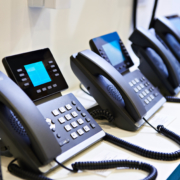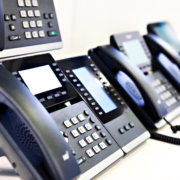Can you use Cat6 for telephones?
When it comes to cabling for telephones, Cat6 is a suitable option for modern systems. However, you should consider your overall requirements before making a decision. Cat5e, Cat6, and Cat6a are all suitable for modern VoIP systems, so it really depends on your needs. If you’re looking for a cable that can handle today’s telephone systems, Cat6 is a good choice. However, keep in mind that your overall cabling needs should be taken into account when making your final decision.
Legacy Phone Systems
Legacy phone systems, like the BT phone line on the wall, used old data cabling for its connections. This cable, CW1308, was specifically used to install all the connections for BT sockets back to a BT connection point. As a result, the phone lines were separate from the rest of the communications networks.
These BT points were not built to a data transmission standard. Therefore, they couldn’t be used for internet, such as PC’s or Wi-Fi. In order to have internet and a phone line you would need two separate installations.
Cat6 For Telephones
Digital Systems
What is a digital phone system?
A digital phone system is a telephone system that uses digital signals instead of the traditional analogue signals. This type of system can offer many benefits, such as improved sound quality and increased security. Additionally, digital phone systems are often more adaptable and scalable than their analogue counterparts.
Digital Systems
Telephone systems progressed to a digital version which had more flexibility than the legacy systems. Standard data cabling was installed from the communications room to both PC’s and Telephones using separate data cables. These cables were terminated onto the same patch panels and onto data modules at the desk. Generally, the cables used were Cat5e and sometimes Cat6 cable.
The BT phone lines were installed into a digital phone system. This allowed for each line to be designated with an extension number. A patch panel was then used to connect the phone system to individual outlets, which would give staff their designated phone number.
The old phone system had several shortcomings. Adding new phone numbers required more cables and panels, and people frequently needed to re-patch the system if they moved around the office.
VOIP Systems
A VOIP system is a type of phone system that uses the internet to make and receive calls. VOIP stands for “Voice over IP”, and is also sometimes referred to as IP telephony or internet telephony. VOIP systems are becoming increasingly popular, as they offer a number of advantages over traditional phone systems.
Advantages of VOIP Systems
Perhaps the most significant advantage is that VOIP systems can be much less expensive to operate than traditional phone systems.
Another advantage of VOIP is that it allows users to make and receive calls from anywhere in the world. As long as you have an internet connection, you can use a VOIP system to make and receive calls. This can be a great advantage for businesses with employees who travel frequently.
Finally, VOIP systems often offer a number of features that traditional phone systems do not. For example, many VOIP systems include features such as call forwarding, caller ID, and voicemail.
Switching to a VOIP system
If you’re considering switching to a VOIP system, there are a few things you should keep in mind. First, VOIP systems are not compatible with all types of internet connections. If you have a dial-up connection, you will not be able to use a VOIP system.
Second, VOIP systems can sometimes be less reliable than traditional phone systems. This is because VOIP calls are routed through the internet, which can be subject to intermittent outages.
Third, VOIP systems often require special equipment, such as a VOIP adapter, in order to work. If you don’t have this equipment, you may not be able to use a VOIP system.
Finally, VOIP systems are typically more expensive than traditional phone systems. If you’re on a tight budget, you may want to consider a traditional phone system instead.
Despite these potential drawbacks, VOIP systems offer a number of advantages that make them worth considering for your business. If you’re looking for a less expensive way to make and receive calls, or if you need the flexibility to make and receive calls from anywhere in the world, a VOIP system may be right for you.
Cat6 for telephones Summary
There are a few different data cabling options that you can choose for your installation. The most common and recommended standard is Cat6, but Cat5e is also a viable option which will still provide gigabit speeds. However, if you need to support 10gigabit connections, then Cat6a is the standard you should go with. Keep in mind that Cat5e is not suitable for 10gigabit speeds, so if you need that kind of support, make sure to go with Cat6a cabling.
A structured cabling design is intended to standardise all cabling to its maximum potential, so that whenever there are changes in layout, equipment, or technology, the cabling will be able to handle it. Installing two different types of cable can negate any savings in material costs, and can also add extra time to the installation process. Therefore, it is generally advisable to use the same type of cable throughout a structured cabling system.





